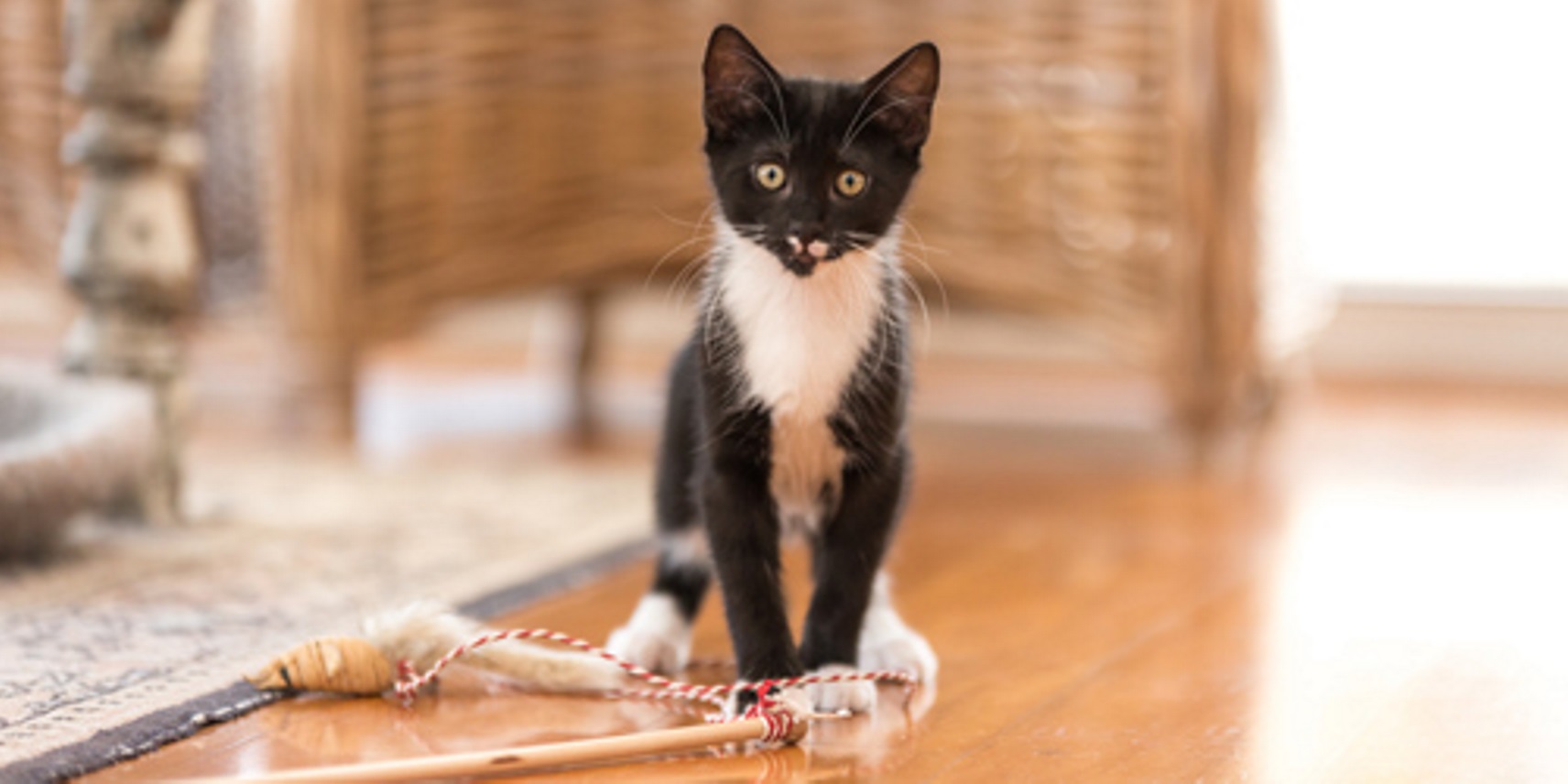Your new kitten

Bringing home a new kitten is incredibly exciting, but there’s plenty you need to do to help your kitten settle into their new home comfortably. When you first bring your kitten home, make sure everything is completely set up for them. The setup should include a warm, quiet place for the kitten to sleep, food and water bowls and a litter tray. It is also important that you start training your kitten the moment you bring it home, as it's easier to set expectations early than it is to retrain out of bad habits. Once you’ve got the basics set up, then you’re ready to introduce your kitten to your home. Below are a few things to remember, once you’ve bought your new pet home.
Training your kitten
Kittens can be trained, provided you are patient, keep the training to short two to three-minute bursts and use rewards such as praise and food. To train your kitten to come on queue, call their name and immediately reward your kitten when it approaches. It is especially easy to train your cat to come when reinforcing this behaviour around meal times or with a treat.
To teach your kitten to sit, hold a treat in front of your kitten’s nose and move your hand slowly up and back over your kitten’s head towards its back. As the kitten follows the treat, their head will go up and bottom down. There is no need to push on its back. Repeat the exercise often. When your kitten is sitting consistently, then start to use the word “sit”. Teaching tricks such as “give me five” or “shake paws” also involves rewards. Just wait for your kitten to lift its paw and reward immediately.
Never punish your kitten if they’re slow to respond as this can aggravate problems. If your kitten is caught out doing something they shouldn’t, clap your hands instead of yelling and ask them to come away.
Handle your kitten daily
It is best to handle your kitten daily while it’s young so that your kitten understands that it is normal to be picked up and touched. When handling your kitten, speak softly and praise it while touching their paws, ears, filing its nails and opening its mouth. Grooming your kitten daily is also a good idea, especially for long-haired breeds. This will help keep your kitten's fur tangle-free and reduce the amount of hairballs your cat will have. And remember, to always reward your cat for calm behaviour.
Litter trays
Cats will use a litter tray without much encouragement, but to minimise issues it’s best to:
- Provide a tray that is big enough for the cat. About 1½ times the length of an adult cat is the minimum size
- Put the tray somewhere easily accessible to the kitten
- Keep the tray away from high traffic areas as cats like privacy
- Keep the litter tray and food bowls away from each other
- Clean the tray daily, especially for covered trays
- Praise your kitten when it uses the litter tray
- If you have more than one cat in the household, provide one litter tray per cat and one extra if possible. Place each litter tray in a different location or room (not side by side) to prevent one cat blocking another cat’s access.
Inside cats
Keeping your kitten indoors keeps them safe from cars, dogs and other cats while also protecting the native wildlife. If you are going to keep your cat inside, then it is best to train them when they’re a kitten.
Provide shelves and hidey holes up high that the cat can use can give them more space to explore, especially by making them more attractive by locating them in sunny spots and placing soft bedding there. Making sure your indoor kitten has plenty of toys to play with while you’re not home is just as important. Anything that moves or makes noise is particularly attractive, like a ping pong ball, and can keep a kitten amused for hours. Cats also often eat grass when outside, so make sure your cat has access to its own garden with catnip, catmint, or cat grass. Keep in mind that indoor plants, such as lilies, however, are toxic and should be removed from rooms that your kitten can access.
You can hide dried food for your cat to find rather than just feeding from a bowl to make them forage to mimic natural behaviour and keep your kitten’s mind and body active. You can also teach your cat to walk in a harness or a lead for controlled excursions outside.
Scratching
Scratching is normal behaviour for cats is used as a scent marker that allows messages to remain long after the cat has left the area. It is best to encourage your cat to scratch in designated areas such as a scratching post. Scratching posts need to be:
- Covered with a suitable loose-weave material such as hessian
- Sturdy and have a stable base so it doesn’t topple over
- Tall enough (or long enough if it is horizontal) to allow your cat to stretch
- In a location where your kitten will use it, usually a prominent area or in front of where the kitten has already started to scratch
Don’t replace the material once it’s worn and torn as this is when your kitten will use it most.
Hygiene and bathing
Cats are incredibly clean animals, and self-clean by licking themselves to remove dirt and matted fur. However, if you want to bathe your cat you can, and it’s better to start when your kitten is young. By bathing your kitten, they will learn that bath time is a normal part of life. Cats do not respond well with forceful restraints, so when bathing your kitten avoid holding them too tightly. Some tips for stress-free bathing are:
- Start when you first get your kitten
- Keep the water warm. A cat’s body temperature is higher than ours (about 38.6°C), so if the water feels lukewarm to you, it may feel cold to the kitten
- Trim or file their nails before you bath them so that if you get scratched, it won’t hurt
- Have a mat, rack, or even a towel on the bottom of the tub for the cat to cling to make them feel more secure
- Cats don’t like being underwater, so using a shower attachment close to the cats body is better than trying to bathe them in a tub
Susceptible to accidents, you’ll want to make sure your kitten is safe and sound, which is why it’s important to consider kitten insurance. Luckily, Vets Choice Pet Insurance will take the stress out of financial woes caused by your furry family member, and make sure that the best choices are available to you should the worst occur.
And most importantly, have fun with your new kitten.
Information cited from:
https://www.vetvoice.com.au/ec/pet-ownership/your-new-kitten/


